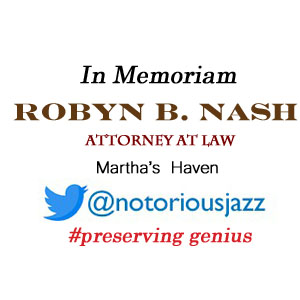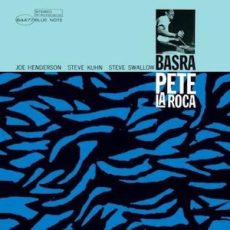
Daily Dose Of Jazz…
Pete La Roca was born Peter Sims on April 7, 1938 in Harlem, New York to a pianist mother and a stepfather who played trumpet. He was introduced to jazz by his uncle Kenneth Bright, a major shareholder in Circle Records and the manager of rehearsal spaces above the Lafayette Theater. He studied percussion at the High School of Music and Art and at the City College of New York, where he played tympani in the CCNY Orchestra. He adopted the name La Roca early in his musical career, when he played timbales for six years in Latin bands.
During the 1970s, after a hiatus from jazz performance, he resumed using his original surname. When he returned to jazz in the late 1970s, he usually inserted La Roca into his name in quotation marks to help audiences familiar with his early work identify him. In 1957, Max Roach became aware of him while jamming at Birdland and recommended him to Sonny Rollins. On the afternoon set at the Village Vanguard he became part of the important record A Night at the Village Vanguard. In 1959 he recorded with Jackie McLean and in a quartet with Tony Scott, Bill Evans and Jimmy Garrison.
Between the end of the 1950s and 1968, he also played and/or recorded with Slide Hampton, the John Coltrane Quartet, Marian McPartland, Art Farmer, Freddie Hubbard, Mose Allison, and Charles Lloyd, among numerous others. During this period, he led his own group and worked as the house drummer at the Jazz Workshop in Boston, Massachusetts.
In 1968 he enrolled in law school and drove a New York City taxi cab to supplement his income. He returned to jazz part-time in 1979, and recorded one new album as a leader, Swing Time in 1997.
Drummer and attorney Pete La Roca died in New York of lung cancer at the age of 74 on November 20, 2012.
More Posts: bandleader,drums,history,instrumental,jazz,music
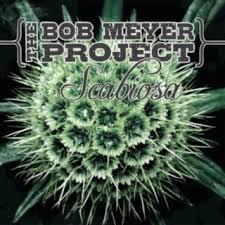
Daily Dose Of Jazz…
Bob Meyers was born on March 31, 1945 in Courtlandt Manor, New York. His early influences were classical and chamber music. When he was five he first heard the music of Kenny Clarke, Charlie Parker, Dizzy Gillespie and Thelonious Monk. It was at that age he began his music studies.
He attended George Washington University in Washington, DC earning his BA in History with minors in Music and Geology. He went on to study with Jack DeJohnette, Frank Dunlop, Henry Adler and Jim Chapin as well as extensive private study as an adult.
As an educator he has taught on both coasts focusing on technique, mechanics, musical application and interpretation on the drum set. Though specializing in jazz many of his students have gone on to be professionally active in jazz, rock and funk.
He has performed with Joe Lovano, John Abercrombie, Judi Silvano, Sheila Jordan, Ray Nance, Jaki Byard, Julian Priester, Gary Peacock, Diane Schurr, Mal Waldron, Kirk Lightsey, Avishai Cohen, Essiet Essiet, Santi Debriano and Vic Juris among numerous others.
As a leader he has recorded eighteen records. Drummer Bob Meyers continues to teach and perform as a leader and a sideman.
More Posts: bandleader,drums,history,instrumental,jazz,music
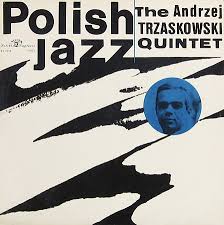
Daily Dose Of Jazz…
Andrzej Trzaskowski was born on March 23, 1933 in Kraków, Poland. He began playing piano at age four and founded his first jazz band, Rhythm Quartet. He attended Jan III Sobieski High School, passed his final exams cum laude, and eventually was admitted to Jagiellonian University where he earned his masters degree with his thesis being on Charlie Parker. Prior to his admittance he earned his living by playing in Kraków, Łódź and Zakopane night clubs.
By 1956 he was performing at jazz festivals and being recognized as the best jazz pianist by a Przekrój poll. From 1958, he played together with Jan Ptaszyn Wróblewski in the band Jazz Believers. The following year Trzaskowski moved permanently to Warsaw, established his own hard bop band, The Wreckers, that drew inspiration from the music of Charlie Parker, Dizzy Gillespie, and Horace Silver. In 1960, the Trzaskowski’s Trio accompanied saxophonist Stan Getz, and they recorded together the album Stan Getz & Andrzej Trzaskowski Trio.
At the end of the 1950s he began working with Polish cinema, arranging and recording music for the film Night Train, composed or created soundtracks for films and appeared on the screen, playing piano in Innocent Sorcerers in 1960 and Feliks Falk’s Był jazz in 1981. Andrzej moved to the United States in 1961 with a new configuration of The Wreckers and toured the country.
The Andrzej Trzaskowski Quintet would go on to perform with Don Ellis, Ted Curson, and in 1963 the Quintet gave concerts in Germany, Italy, Switzerland, Yugoslavia, East Germany and Belgium over the next year. By 1963, he began to move away from bop music towards free jazz.
In the Seventies he performed and recorded at the Polskie Radio Jazz Studio, and became the head of Polish Radio Symphony Orchestra Studio S-1. From 1992 he lectured at the Jazz Department of the State Music School of Warsaw and during the last years of his life he composed almost exclusively for cinema and television. In 1995, he was awarded the Cross of Merit for his artistic career.
Pianist, composer and musicologist Andrzej Trzaskowski, who from the mid-1950s onward was regarded as an authority on syncopated music, died in Warsaw on September 16, 1998, aged 65.
More Posts: bandleader,composer,history,instrumental,jazz,music,piano
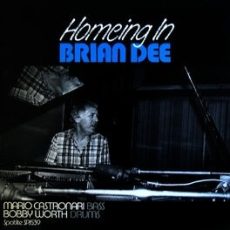
Daily Dose Of Jazz…
Brian Colin Dee was born in London, England on March 21, 1936. He came to prominence in 1959 playing at Ronnie Scott’s Jazz Club in London. At that time he was playing with Lennie Best, Dave Morse and Vic Ash.
He later joined the Jazz Five and played opposite Miles Davis on a nationwide tour and was voted Melody Maker’s ‘New Star of 1960’. Brian also appeared at the Establishment Club in 1962 where his trio played opposite Dudley Moore.
Throughout an uninterrupted career, Dee has played with many jazz musicians, including Ben Webster, Zoot Sims, Al Cohn, Benny Carter, Harry “Sweets” Edison, Eddie “Lockjaw” Davis, Chet Baker, Al Grey, Sonny Stitt, Victor Feldman and Joe Newman.
From the late 1960s onwards, Dee was in demand as a session musician, appearing on many orchestral recordings. Subsequently, he went on to play with the Ted Heath Orchestra, for the last 10 years of its existence and was also a member of Laurie Johnson’s London Big Band.
Renowned as a fine accompanist to singers, Brian has recorded or appeared alongside Bing Crosby, Fred Astaire, Johnny Mercer, Elton John, Peggy Lee, Frankie Laine, Joe Williams, Jimmy Witherspoon, Mark Murphy, Cleo Laine and Annie Ross. He was musical director for Lita Roza, Cilla Black, Rosemary Squires, and Elaine Delmar.
Working with Irving Martin they composed the theme for Return of the Saint. In 1978, their Good Times album was released on Bruton Music BRG 4.
Pianist and musical director Brian Dee, who played organ and/or harmonium on four of Elton John’s early albums, at 87 years old, continues to perform.
More Posts: harmonium,history,instrumental,jazz,music,organ,piano
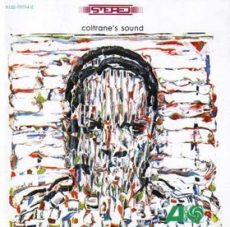
Daily Dose Of Jazz…
Steve Davis was born March 14, 1929 in Philadelphia, Pennsylvania. The youngest of 10 children, he became interested in music as a young teenager and was inspired by his older brother who also played the bass. He was part of a group of young Philadelphia jazz musicians that included saxophonists Benny Golson and John Coltrane. At age 16 he began playing with local big bands and dropped out of high school a year later to pursue a music career.
During the 1940s and 1950s he worked frequently playing with Philly Joe Jones and Jimmy Oliver among others. In 1960, he was briefly a part of the John Coltrane Quartet, before being replaced temporarily by Reggie Workman and permanently by Jimmy Garrison. He was the double bassist on the recordings of My Favorite Things, Coltrane Plays The Blues and Coltrane’s Sound.
He also recorded as a sideman with Chuck and Gap Mangione on Hey Baby! In 1961 and with quartet fellow and brother-in-law McCoy Tyner on the 1963 album Nights of Ballads & Blues. Davis went on to play on several of James Moody’s groups. He worked throughout the 1960s as a freelancer in New York and as a side man appearing on albums by Kenny Dorham and others.
Moving to Rochester, New York in 1970 Steve played bass with the Gap Mangione Trio, Spider Martin Group and other local bands. He was a mentor to younger jazz musicians in Rochester and enjoyed passing on his knowledge. 1980 saw him beginning to suffer from emphysema and returned to Philadelphia.
Bassist Steve Davis, who was also known by his Muslim name Luquman Abdul Syeed, died on August 21, 1987 at the age of 58.
More Posts: bass,history,instrumental,jazz,music


